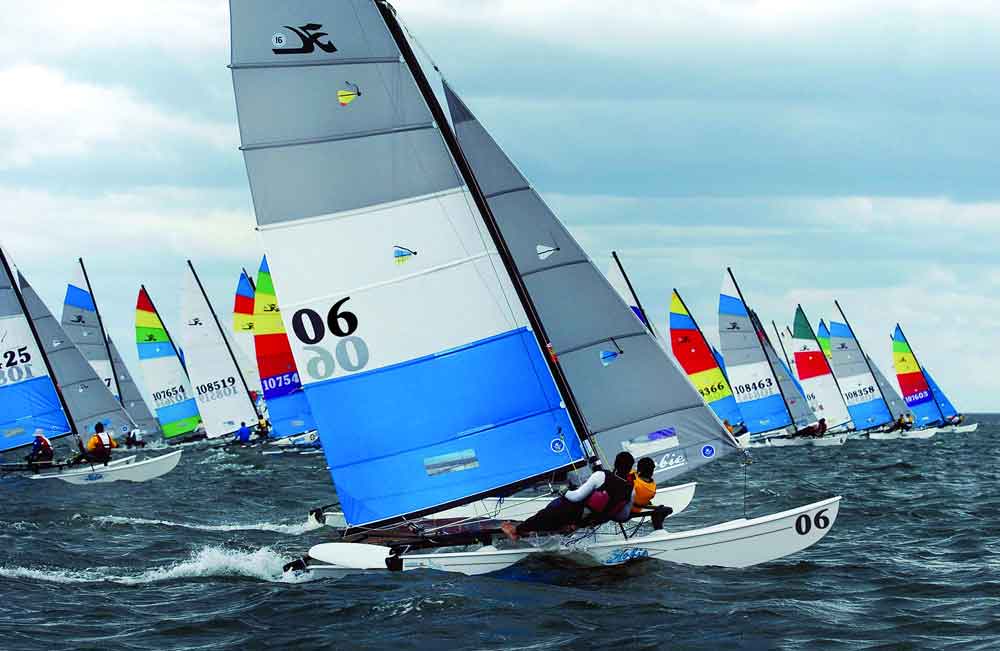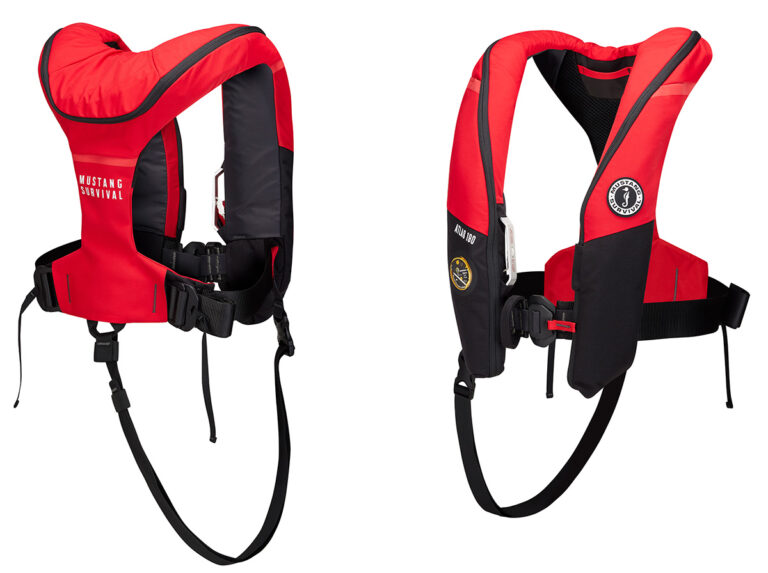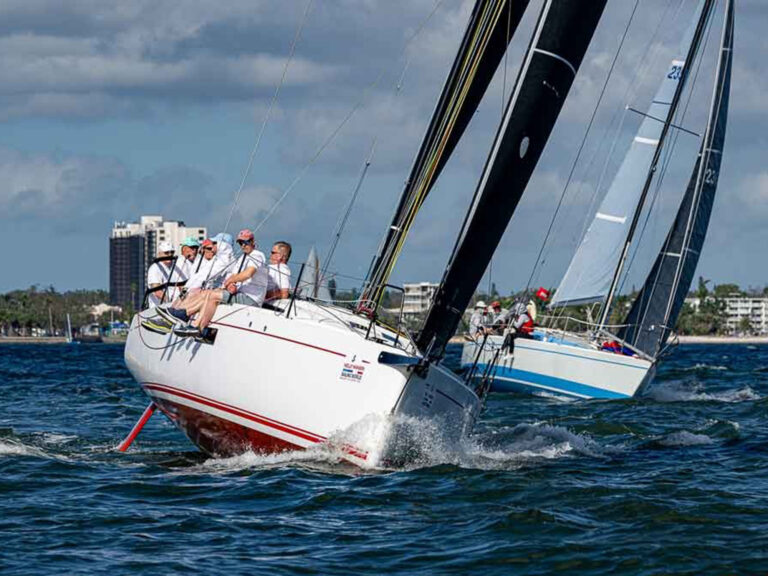
Hobie 16s
The recent article in Sailing World Magazine on sail battens, battens for full batten sails, did not get into the technology of these battens. It is a deep and complex subject.
The battens in a full-batten sail primarily do two things: 1. They affect the airfoil shape of the sail. 2. They affect the stability of the airfoil shape of the sail.
The full batten should ideally bend in the same airfoil shape as the sailmaker designed into the sail. This means the batten under load should have its maximum bend or deflection at approximately 40% chord or 40% of the width of the sail at the batten location in the sail.
The batten should be more bendy in the luff area or front end of the sail and then less bendy in the middle of the sail and stiff at the aft end or leech area of the sail. To get a stick to bend like this, it obviously has to be tapered or vary in thickness along its length.
Now, the most popular battens supplied with sails that require full battens are the “untapered” batten.
Why? Because they are cheap! The first area of a sail where a batten must bend properly is in the luff area, that area of the sail with the greatest bend. If a batten is too stiff here, it will stick out like a sore thumb here and make the sail too flat. Therefore the untapered batten will be very bendy or “soft” as the bend characteristic is described.
The untapered batten has equal stiffness in the luff area of the sail as it does in the mid area of the sail, as it does in the leech area of the sail. Therefore it now becomes obvious that an untapered batten on an overall basis is very soft and bendy. It is probably not stiff enough to stand vertically in a straight line or column. It will naturally have its greatest deflection at 50% chord, not 40% as a sailmaker might design a sail.
Also the untapered batten’s natural bend or curvature will be symmetrical about the batten mid point, 50% chord. Now we see a conflict between the way the untapered batten naturally wants to bend and the airfoil shape the sailmaker built into the sail. So, what are we going to do? Ahhh, we get bailed out. The sailcloth saves the day…. at least a little bit.
Let’s assume we have a typical untapered soft batten at mid sail height and this batten is soft enough to bend compatible with the way the sailmaker made the sail in the luff area. This batten is just as bendy in the mid chord part of the sail as it was in the luff area. So, is the batten going to continue to bend in the mid chord part of the sail as it did in the luff area? The answer is no. Here the sailcloth and the cut of the sail stop the batten from bending too much. The sailcloth limits the bend. Also in the leech area of the sail, the sailcloth and the cut of the sail restrict the soft bendy batten from bending too much.
The result in the ideal situation with the sail trimmed properly and the wind at the correct strength and angle of attack and all sail adjustments correct for the point of sail is an aerodynamically correct looking/shaped sail.
But, we don’t sail in perfect conditions with our sails always perfectly trimmed. The wind is constantly changing in true wind speed and direction and even more so the relative windspeed is changing in speed and direction. The wind strength delta bubble across the sail is constantly changing in strength and fore and aft location.
What this discussion is pointing out so far is a total lack of sail shape control or lack of sail shape stability with untapered, soft and bendy, battens. Now let’s look at what happens with tapered battens. Here the front end or luff end of the batten is soft and bendy. The mid length of the batten is stiffer and the leech end of the batten is very stiff.
If properly tapered, this batten naturally bends with the max deflection at 40% chord. Now we have a batten that naturally bends in a shape like the sailmaker designed the sail to. This batten is going to have a very strong tendency to help the sail maintain the same shape the sailmaker designed into the sail regardless of maladjustments in sail trim or wind angle of attack etc. You will not see a hooking leech like in picture number one. The sail with properly tapered battens will be a faster sail.
So you see, battens are not just sticks you put in a sail to hold a roachy leech out. They are just as important as the sail shape the sailmaker designs into the sail when it comes to performance, boatspeed.









